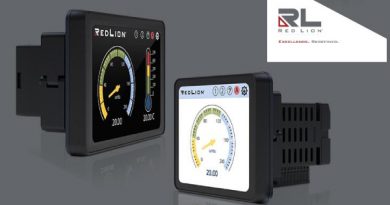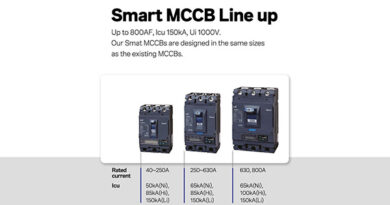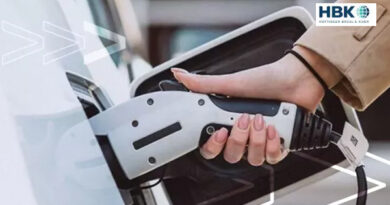Measuring Vehicle Energy and Power Distribution for Components, Systems, and Certification

Understanding how vehicles use and distribute energy is crucial for electric vehicle development and certification. Electrical powertrain, including motors and inverters, heat- ing, air conditioning, infotainment, and other sub systems all consume energy that is being supplied by the battery pack. Any energy usage or inefficiency can result in a shorter range of the vehicle. By mapping out the energy usage of all the subcomponents, automotive engineers can start to make decisions about vehicle control, and component selection to maximize the range of the vehicle. Vehicle manufacturers must make important decisions between weight, cost, range, and performance to make vehicles that have a desirable range for customers, and that meet the green energy requirements.
There are three main groups who are interested in vehicle energy consumption, certifying bodies, system engineers, and component engineers. Certifying bodies need accurate power measurements to give the electrical mile per gallon (MPGe) efficiency certification of a vehicle. This number allows con- sumers and governing bodies to make decisions. Vehicle and system level engineers need to understand how the different components and subsystems perform so they can optimize the range of a vehicle. This is not just for powertrain, but all the subsystems that are also consuming energy. Lastly compo- nent level engineers need to be able to look at where losses are occurring and how to minimize them.
These types of vehicle range tests require a standardized torque and speed profile so that it can be a true standardiza- tion between vehicle ranges. The profiles, often referred to as drive cycles (figure 1), are a profile of speed vs time. The drive cycles have different speeds, accelerations, and decelerations to simulate “city” and “highway” miles. The profiles will be played back on a chassis dynamometer that has been tuned for the vehicle rolling dynamics. The driver of the vehicle will then control the speed while energy usage and distance are be measured. The energy can be measured for a whole vehicle, sections of the vehicle, or individual components depending on what engineers want to optimize over.
CERTIFICATION
When a manufacturer brings a vehicle to market, it needs to have a range and fuel efficiency certified by the governing bodies of that country, in the USA, this would be the EPA. These groups run the drive cycles from full charge until the vehicle runs out of battery charge and record the energy used and distance the vehicle traveled. Measuring the energy usage is accomplished by putting a current clamp around the main DC cable and measuring the DC voltage and current into a power analyzer. The power analyzer will then calculate the electrical power and energy being passed through the cable. In the event a vehicle has multiple DC batteries the energy would be measured from those as well and add them up.
Measuring the DC bus voltage can be challenging for a variety of reasons. Voltage and current access points are often hard to get to and require modification of the vehicle in some way to get voltage probes and current sensors in place. Some auto manufacturers will have currents running through their DC cable shield. In this instance the OEM may need to route the shield around the sensor or have a clever method of compensation. Another challenge that occurs with the certified tests is that the data and equations need to be traceable for auditability. Having recorded data, known measurement periods, and clearly defined equations will make it so that any discrepancy in the test is understood and able to be solved. Some issues may include sensor drop out, electrical noise, misunderstood behavior, and others.
The tests will often have different segments that need have their energy separated so that the governing bodies can assign not only a total fuel efficiency, but also a city and highway fuel efficiency. The drive cycles will be segmented, and energy will be determined for each segment, and this will be used to determine the city or highway fuel efficiency.
The instrumentation for measuring energy and power during a range test can directly affect the accuracy and complexity of the test. Engineers will often look for systems that sim- plify their testing by selecting a measurement system that records electrical data and gives easy access to equations. Having the ability to audit and edit a test can make testing complex systems with multiple DC busses or shields a much simpler task. Some tests will need to be executed over many hours, in which case engineers will want a system that can store, and reduce a significant amount of data, while giving transparency to the results. Having the options to trigger, segment, and feedback data to a control room are also features that will help raise the reliability and quality of cer- tified range tests. The HBM eDrive system is often used for certified range testing because it is designed to store data, receive triggers, edit equations, time align data, and offer feedback to control systems.
ENGINEERING RANGE TEST
An engineering range test is similar to a certification test but with more measurements and potential configurations. Engineers run the tests to optimize their vehicle energy usage so that they can maximize their range for the certification. The test is still a full vehicle running through drive cycles on a chas- sis dyno, there is still limited access to voltages and currents, and the collection of data is even more important because now engineers will want to understand the details to make changes. The tests require more measurements because in addition to the DC bus measurements, they will also include all the subcomponents and sub systems. This can include as many as 15 power/energy measurements, which can create measurement challenges since many power analyzers only offer 3,6, or 7 channels. Having multiple systems to measure a test will result in time alignment issues and increased capital cost. Ideally an engineer will measure and record all the ener- gies so that they can have a detailed understanding of how power is distributed throughout a vehicle. Once the engineers collect the data from each of the power consuming units, they can begin to make decisions on how to control the vehicle and how to operate the subcomponents. To fully understand the system operation, this will often need to be aligned with CAN bus or vehicle information so that changes can be made to timing and operations. It also may be of interest to incorporate other vehicle level signals or temperatures to get a full vehicle understanding. Once the full vehicle power flow and signals are understood, changes to the vehicle level control, or the sub- components can be made to increase the range.
Many times, engineers will try to measure the AC signals in the engineering range test to understand the inverter and motor losses during the test. However, this can prove to be difficult to because measuring AC power requires an exact measure- ment of the fundamental frequency. Tracking the fundamental frequency requires advanced algorithms to be executed in real time to get a real accurate power and energy measurement. An example of a cycle detect algorithm can be seen in figure 3. When selecting instrumentation, the method of frequency synchronization needs to be considered to ensure an accurate measurement.
Engineering range tests will also be done on competitor vehi- cles to do benchmarking or understand how other companies manage the energy distribution. This can present added challenges due to not always having access to measurement points, however this can be overcome by taking voltage or current measurements off the vehicle bus. While it may not be a perfect solution, it is better than no measurement, and can provide added insights to how the vehicle is running. For the best estimate of the operation, the engineer will want to have the vehicle bus and measurements closely time aligned.
Engineering range tests have many of the same instrument requirements as the certification test. They need to have recorded data and transparent equations. The engineers need to be able to track the energy usage for different sections of the test and need to visualize and communicate measured values back to a control room. The difference is that they need to do significantly more measurements and incorporate a wider variety of measurements. There is also a possibility that there will be AC measurements. The eDrive system can easily accommodate this type of testing by allowing for >51 power measurements of DC or AC in a single measurement system and include CAN and temperature measurements into the data file. The eDrive measures power with a digital cycle detect that can easily measure AC power during frequency changes.
COMPONENT RANGE TESTING
Component range testing can be done on a chassis dyno, like the other two tests, but is often done on a direct drive dynamometer for the best quality measurements on compo- nents. The test involves mounting a motor and inverter to a precision dynamometer (figure 4) and then running the torque and speed profile of the drive cycle. The DC bus, AC phase measurements, torque, and speed will typically be measured for these profiles with high precision instrumentation. By taking high accuracy measurements, engineers can start to understand the power losses of the components in detail. If the engineers choose to incorporate temperatures of both the rotor and the stator, they can start to look at iron, copper, and other losses to understand how energy losses are distributed throughout a drive cycle. Once the losses of the component are understood, they can start to be controlled and minimized.
Another goal of component level testing is to calibrate the motor and inverter to be as efficient as possible while hitting performance objectives. To do this, engineers must under- stand the inverter control by reading the CAN bus, tempera- tures by measuring thermocouples, and efficiency by running efficiency maps and drive cycles.
Testing for the component test has many of the same chal- lenges as the two previous test types, but now includes torque and speed to characterize the motor, and motor losses in detail. Rather than optimizing a system level control, these engineers will be looking at fine details and making control or design changes for the future. The eDrive system can benefit these engineers by taking in a wide variety of measurements at a high accuracy and recording the data. This will allow for a better understanding of the details of the machine and make changes.
CONCLUSIONS
Vehicle energy management is a detailed process that includes many steps and considerations. It presents chal- lenges because of potentially high channel counts and the dynamic nature of the signals. Vehicle energy management is potentially handled by a variety of groups all with the goal of minimizing their losses and maximizing their range for real world driving scenarios. The need to accurately understand the energy distribution throughout the vehicle has made measure- ment an important topic when discussing these types of tests.
The eDrive system can help simplify testing of vehicle energy management and drive cycles by accurately measuring high channel counts of power and mechanical signals, including power during frequency changes. eDrive provides transparency to tests by presenting all the equations to the user and giving them the ability to change equations if necessary. Engineers can segment their tests into different drive cycles and visualize the data in a control room. Additionally, the eDrive system can be used for all three of the tests to give consistent data across a company, simplifying testing and saving money.



